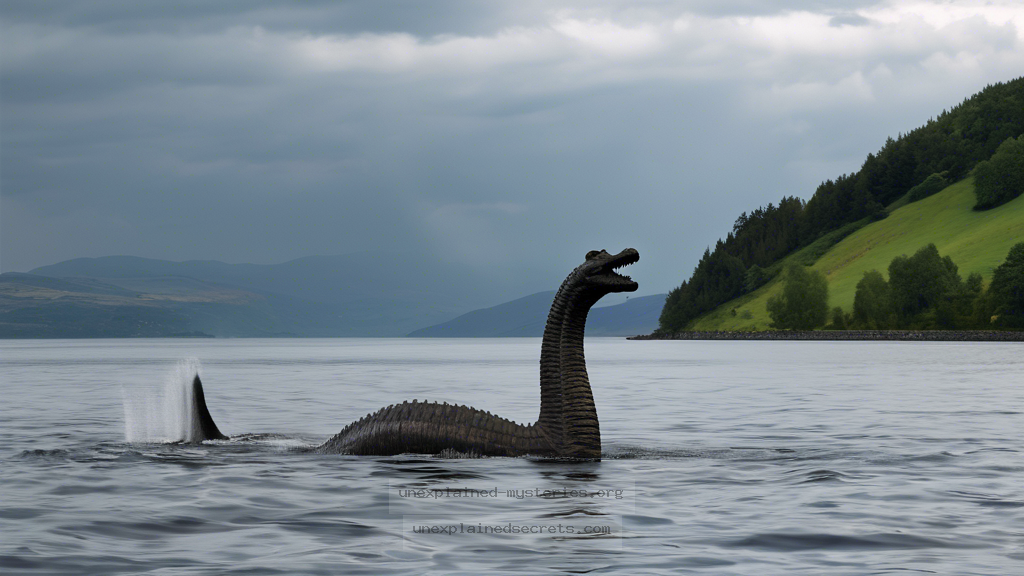What Do Recent Sonar Detections Reveal About the Existence of the Loch Ness Monster?
What Do Recent Sonar Detections Reveal About the Existence of the Loch Ness Monster?
The Loch Ness Monster, often affectionately dubbed “Nessie,” has captivated imaginations for centuries. The question of whether a creature of such legendary status exists has inspired countless expeditions, theories, and debates. Recent sonar detections have brought this age-old mystery back into the spotlight, prompting both excitement and skepticism. This post delves into the implications of these sonar findings, what they could mean for cryptozoology, and the ongoing search for evidence of the elusive creature.
Understanding the Significance of Sonar Technology
Sonar, which stands for Sound Navigation and Ranging, is a technology that uses sound waves to detect and locate objects underwater. It has been an essential tool in maritime exploration and has significantly advanced our understanding of aquatic environments. In the case of Loch Ness, sonar technology is employed to investigate the depths of the loch, which reaches about 230 meters (approximately 755 feet) at its deepest point. The vastness and murkiness of Loch Ness make it a challenging area for traditional exploration methods.
Recent sonar scans have generated significant interest and speculation surrounding the Loch Ness Monster. In 2020, a team of researchers from the University of Exeter conducted a sonar survey that detected several large, unexplained objects lurking beneath the surface, reigniting hopes of uncovering evidence of Nessie’s existence. These findings not only provide tangible data but also highlight the potential of modern technology to unveil mysteries that have persisted for generations.
A Brief History of Loch Ness and Nessie Sightings
The legend of the Loch Ness Monster dates back to the 6th century when St. Columba is said to have encountered a “water beast” in the loch. However, it wasn’t until the 1930s that Nessie gained widespread fame, following the publication of the infamous “Surgeon’s Photo” in 1934. This photograph purportedly showed a long-necked creature swimming in the loch, but it was later revealed to be a hoax.
Since then, hundreds of alleged sightings have been reported, each adding to the lore surrounding Nessie. These accounts vary widely, with descriptions ranging from a large, serpent-like creature to a more plesiosaur-like figure. While some enthusiasts argue that these sightings are credible, skeptics often attribute them to misidentifications of common wildlife, such as otters or wave patterns.
Analyzing Sonar Data: What Did Researchers Find?
The sonar survey conducted by the University of Exeter aimed to map the loch’s underwater ecology and identify potential anomalies that could be linked to Nessie. The research team employed advanced sonar technology capable of producing high-resolution images and data about submerged objects. During their survey, they detected several large objects at depths ranging from 30 to 100 meters.
While the sonar data did not confirm the existence of the Loch Ness Monster, it did present intriguing possibilities. Some of the detected objects were of considerable size, leading researchers to speculate whether they could be the remains of large animals or geological formations. However, the lack of definitive evidence means that these findings remain open to interpretation.
Theories Surrounding the Loch Ness Monster
There are several theories regarding what could be lurking in the depths of Loch Ness. Some of the most popular hypotheses include:
- Plesiosaur Theory: This theory suggests that Nessie is a surviving specimen of a prehistoric marine reptile, the plesiosaur, which may have survived extinction.
- Giant Eel Theory: Some researchers propose that Nessie is a giant eel, which can grow to significant lengths and is known to exist in the loch.
- Misidentified Animals: Many sightings may be attributed to misidentifications of common wildlife, such as otters, seals, or even floating debris.
- Geological Phenomena: Some experts suggest that the sonar detections could be explained by underwater geological formations or pockets of gas.
Comparing Historical Accounts with Modern Technology
Historical accounts of Nessie sightings often lack the rigorous documentation and verification processes that modern investigations employ. For instance, the Surgeon’s Photo, which was taken in 1934, has been discredited as a hoax, yet it remains one of the most iconic images associated with the Loch Ness Monster. In contrast, contemporary sonar technology provides quantifiable data that can be analyzed and interpreted scientifically.
| Aspect | Historical Accounts | Modern Sonar Findings |
|---|---|---|
| Verification | Often anecdotal and unverified | Data-driven and scientifically analyzed |
| Clarity | Vague descriptions and ambiguous images | High-resolution images and specific depth measurements |
| Evidence | Based on eyewitness testimonies | Based on sonar scans and real-time data |
Alternative Perspectives: Debunking the Myth
While many enthusiasts cling to the belief in the Loch Ness Monster, there are numerous skeptics who argue that the phenomenon can be explained through rational explanations. For instance, the loch’s murky waters and complex underwater topography can easily lead to misinterpretations of natural occurrences. Additionally, the idea of a large, unidentified creature thriving in a freshwater loch is met with skepticism by many in the scientific community.
Prominent skeptics argue that the sightings can largely be attributed to a combination of human psychology, such as pareidolia (seeing patterns in random stimuli), and the lore surrounding the Loch Ness Monster that has been perpetuated through media and culture. This ongoing debate highlights the intersection of belief, evidence, and the human desire for mystery.
Common Misconceptions About Nessie
There are several misconceptions that have persisted over the years regarding the Loch Ness Monster. Understanding these can help clarify the ongoing dialogue about Nessie’s existence.
- All sightings are credible: Many sightings are later debunked or explained as natural phenomena.
- Sonar technology has conclusively proven Nessie exists: While sonar findings are intriguing, they do not provide definitive proof of a creature.
- Nessie is a single creature: Some believe that there is only one Loch Ness Monster, while others argue that there could be multiple creatures or explanations for sightings.
Best Practices for Investigating Loch Ness
For those interested in investigating the Loch Ness Monster, there are several best practices to consider:
- Utilize Technology: Employ advanced sonar and underwater drones to gather data and explore the loch’s depths.
- Document Findings: Keep thorough records of any observations or data collected for future analysis.
- Engage with Experts: Collaborate with marine biologists and cryptozoologists to gain insights and validate findings.
- Maintain Objectivity: Approach the investigation with an open mind, but remain skeptical of unverifiable claims.
The Future of Loch Ness Research
The future of Loch Ness research is promising, as advancements in technology continue to evolve. With new sonar capabilities and underwater exploration tools, researchers are better equipped than ever to explore the depths of the loch. Ongoing studies may reveal new insights into the ecology of Loch Ness and potentially uncover evidence that could validate or debunk the existence of the Loch Ness Monster.
Moreover, as interest in cryptozoology grows, more funding and support may be directed towards expeditions and scientific inquiries into the loch. This could lead to a more rigorous examination of the various hypotheses that have emerged over the years.
Conclusion: The Mystery Continues
The recent sonar detections in Loch Ness have opened a new chapter in the ongoing saga of the Loch Ness Monster. While the findings are intriguing, they do not provide conclusive evidence of Nessie’s existence. The intersection of technology, folklore, and human curiosity ensures that the mystery of Loch Ness will persist for years to come. As researchers continue to explore the depths of this enigmatic loch, the question remains: is there truly something lurking beneath the surface, or is it merely a figment of our imagination?
Other Articles
Recent Posts
- What Happened to Flight MH370? The Conspiracy Theories That Still Haunt Us
- What Secrets Lurk Within the Walls of the Infamous Trans-Allegheny Lunatic Asylum?
- What Evidence Supports the Existence of Bigfoot in the Pacific Northwest?
- What Happened to the Indus Valley Civilization? Unraveling the Mysteries of Ancient Urban Life
- Can Telepathy Be Scientifically Proven Through Laboratory Evidence?







